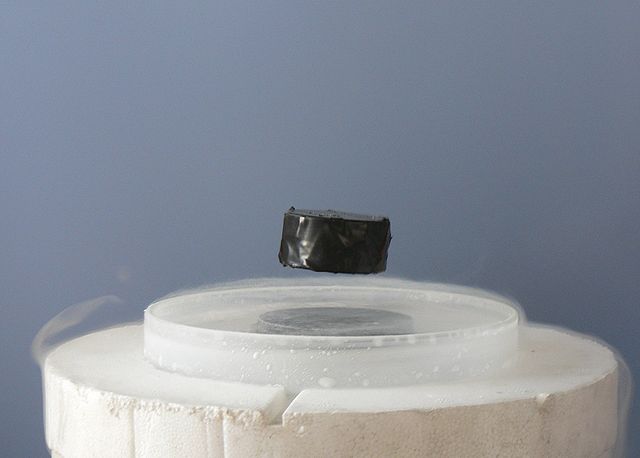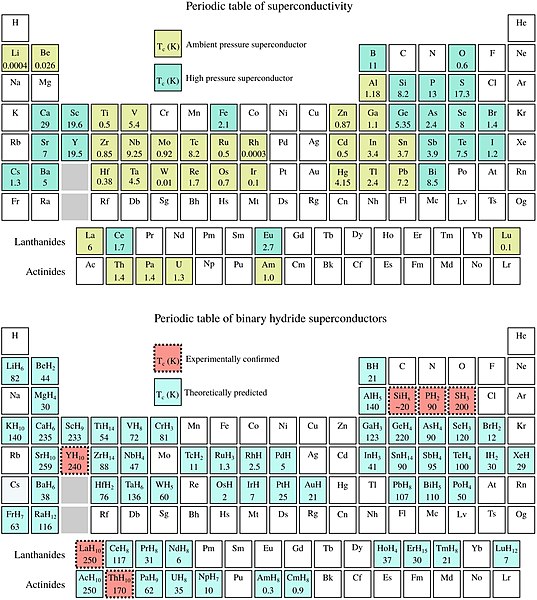High-temperature superconductivity
High-temperature superconductors are defined as materials with critical temperature above 77 K, the boiling point of liquid nitrogen. They are only "high-temperature" relative to previously known superconductors, which function at even colder temperatures, close to absolute zero. The "high temperatures" are still far below ambient, and therefore require cooling. The first break through of high-temperature superconductor was discovered in 1986 by IBM researchers Georg Bednorz and K. Alex Müller. Although the critical temperature is around 35.1 K, this new type of superconductor was readily modified by Ching-Wu Chu to make the first high-temperature superconductor with critical temperature 93 K. Bednorz and Müller were awarded the Nobel Prize in Physics in 1987 "for their important break-through in the discovery of superconductivity in ceramic materials". Most high-Tc materials are type-II superconductors.

A sample of bismuth strontium calcium copper oxide (BSCCO), which is currently one of the most practical high-temperature superconductors. Notably, it does not contain rare-earths. BSCCO is a cuprate superconductor based on bismuth and strontium. Thanks to its higher operating temperature, cuprates are now becoming competitors for more ordinary niobium-based superconductors, as well as magnesium diboride superconductors.
Fig. 1. The Fermi surface of bi-layer BSCCO, calculated (left) and measured by ARPES (right). The dashed rectangle represents the first Brillouin zone.
Unit cell for the Cuprate of Barium and Yttrium (YBCO)
Small magnet levitating above a high-temperature superconductor cooled by liquid nitrogen: this is a case of Meissner effect.
Superconductivity is a set of physical properties observed in certain materials where electrical resistance vanishes and magnetic fields are expelled from the material. Any material exhibiting these properties is a superconductor. Unlike an ordinary metallic conductor, whose resistance decreases gradually as its temperature is lowered, even down to near absolute zero, a superconductor has a characteristic critical temperature below which the resistance drops abruptly to zero. An electric current through a loop of superconducting wire can persist indefinitely with no power source.
A high-temperature superconductor levitating above a magnet. Persistent electric current flows on the surface of the superconductor, acting to exclude the magnetic field of the magnet (Meissner effect). This current effectively forms an electromagnet that repels the magnet.
Top: Periodic table of superconducting elemental solids and their experimental critical temperature (T) Bottom: Periodic table of superconducting binary hydrides (0–300 GPa). Theoretical predictions indicated in blue and experimental results in red
Electric cables for accelerators at CERN. Both the massive and slim cables are rated for 12,500 A. Top: regular cables for LEP; bottom: superconductor-based cables for the LHC
Cross section of a preformed superconductor rod from the abandoned Texas Superconducting Super Collider (SSC)








